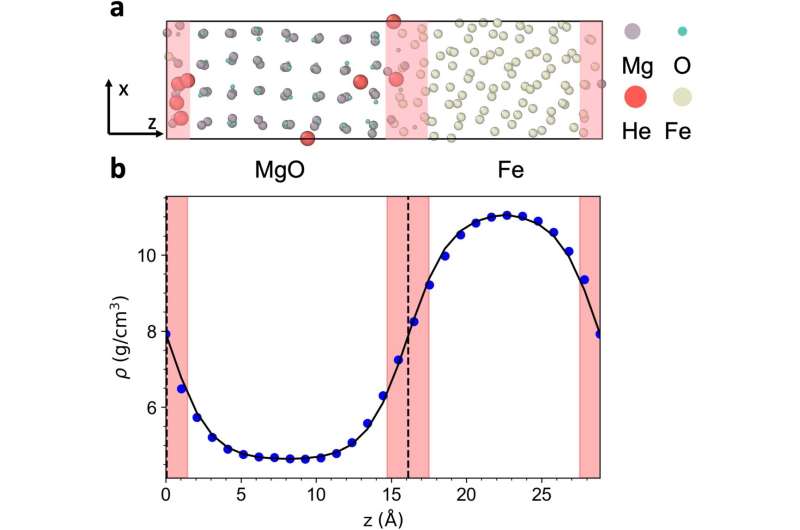May 11, 2023 report
A theory to explain why helium-3 is leaking from Earth's core

Bob Yirka
news contributor

Two geoscientists, one with Princeton University, the other with Guangzhou Institute of Geochemistry, have developed a theory to explain how helium-3 leaks from the Earth's core into the mantle. In their study, reported in the journal Nature Geoscience, Jie Deng and Zhixue Du used first-principle calculations to show that helium-3 could enter magnesium oxide at the core-mantle boundary, allowing its entry into the mantle.
Helium-3, a helium isotope with one neutron in its nucleus instead of the more common two, is extremely rare on Earth's surface, but recent research has shown that it can be found in volcanic rock formations on the ocean floor. The finding suggests that some process allows helium-3 to seep from the core into the mantle. Scientists would like to obtain more helium-3 because it has proven useful in fusion reactors as a source of fuel.
Prior research has suggested that there is a large amount of helium-3 locked in Earth's core—planetary scientists believe it got there during the formation of the planet. Helium-3 was a constituent of the dust and gases that coalesced approximately 4.5 billion years ago. And because of its nature, it became locked into the core. But some process has been allowing some of it to escape into the mantle, and now, Deng and Du believe they may have figured out why.
Prior research has shown that when helium-3 comes into contact with magnesium oxide, it exsolves, which means it is changed from an initial homogenous mineral into one that has crystalline phases. As part of the process, the helium is physically moved to the location of the magnesium oxide.
The researchers mathematically demonstrated that helium-3 could have been pulled from the core through interactions with magnesium oxide shortly after the planet formed, continuing right up to the present. Their math shows that over the lifetime of the planet, as helium-3 was exsolved, it could have slowly made its way to parts of the mantle, where it may have risen to the surface through volcanic activity.
Written for you by our author —this article is the result of careful human work. We rely on readers like you to keep independent science journalism alive. If this reporting matters to you, please consider a (especially monthly). You'll get an ad-free account as a thank-you.
More information: Jie Deng et al, Primordial helium extracted from the Earth's core through magnesium oxide exsolution, Nature Geoscience (2023).
Journal information: Nature Geoscience
© 2023 Science X Network





















